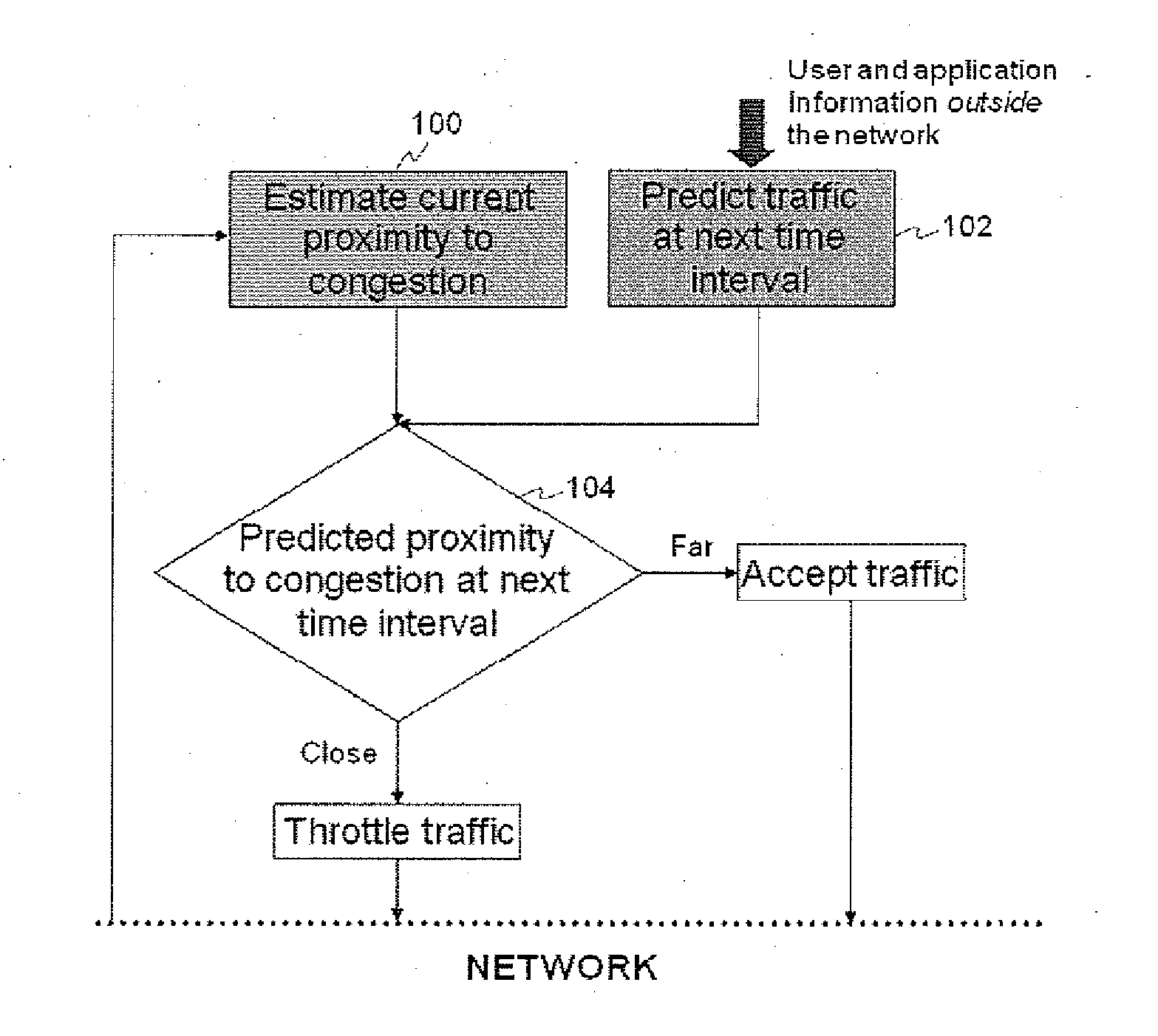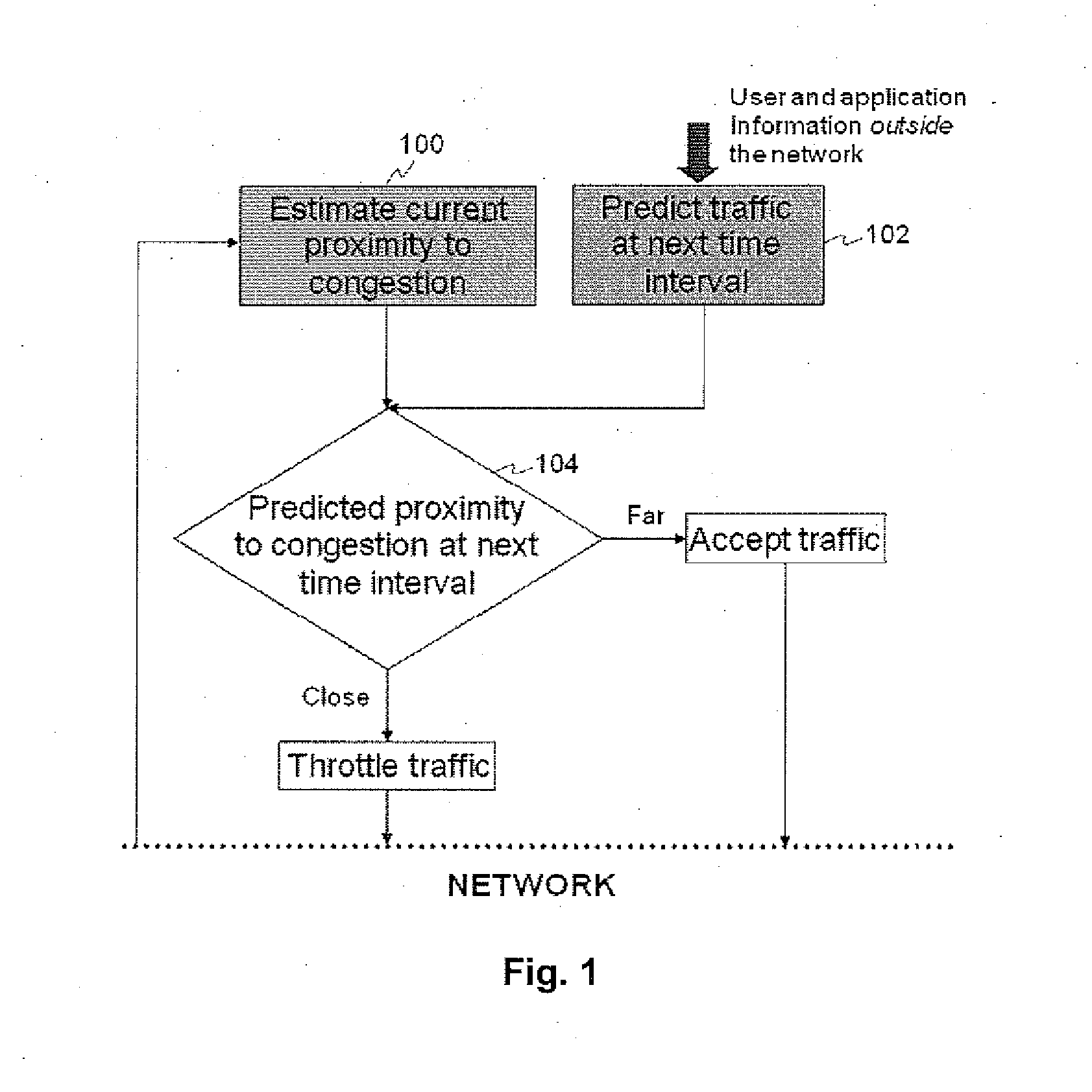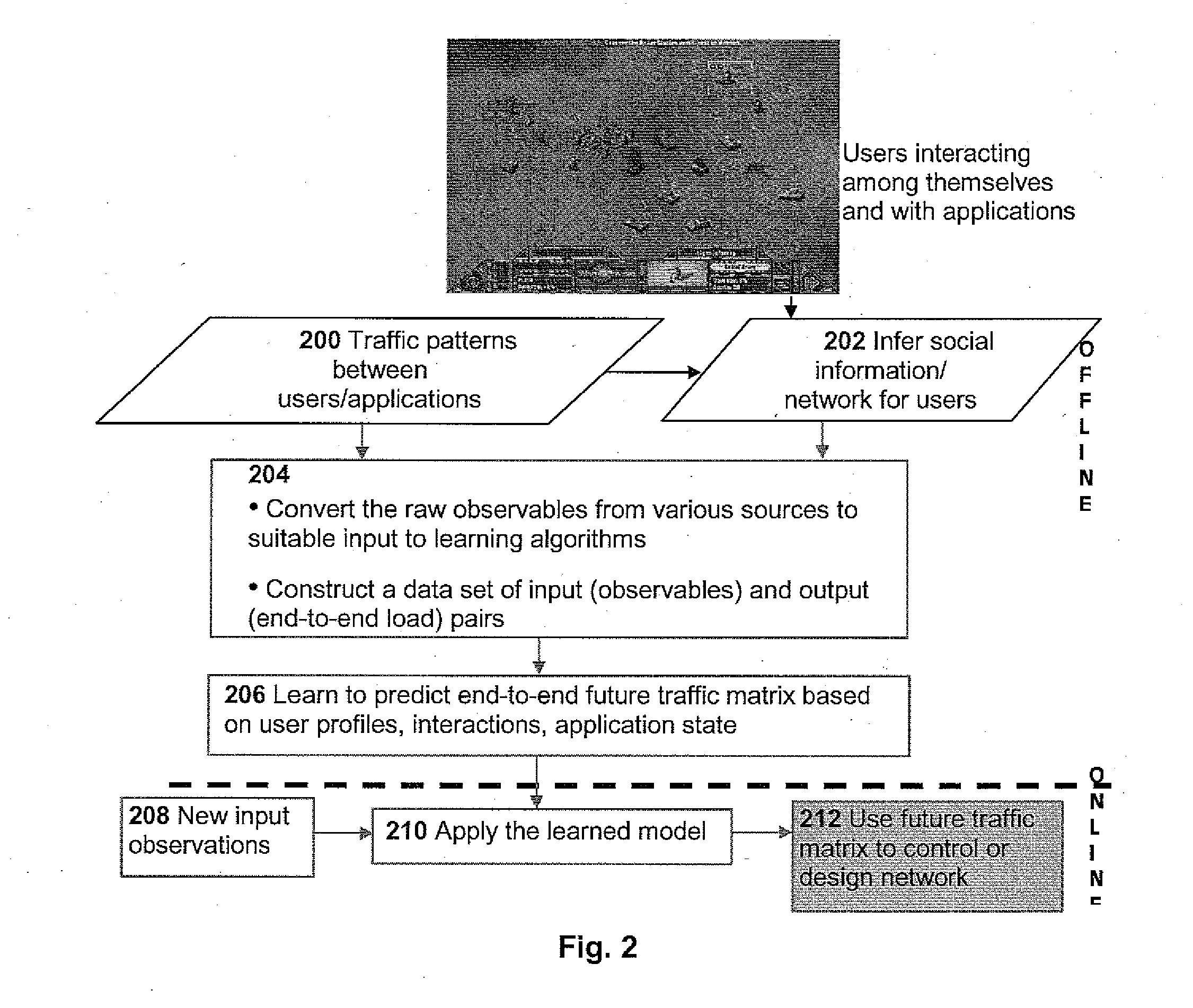Cognitive network load prediction method and apparatus
- Summary
- Abstract
- Description
- Claims
- Application Information
AI Technical Summary
Benefits of technology
Problems solved by technology
Method used
Image
Examples
Embodiment Construction
[0031]In the following description, for purposes of explanation and not limitation, specific techniques and embodiments are set forth, such as particular sequences of steps, interfaces, and configurations, in order to provide a thorough understanding of the techniques presented here. While the techniques and embodiments will primarily be described in the context of the accompanying drawings, those skilled in the art will further appreciate that the techniques and embodiments can also be practiced in other electronic devices or systems.
[0032]Reference will now be made in detail to exemplary embodiments of the present invention, examples of which are illustrated in the accompanying drawings. Whenever possible, the same reference numbers will be used throughout the drawings to refer to the same or like parts.
[0033]One goal of the present invention is to keep the network away from congestion while maximizing its utility to the users. Effective admission control for congestion avoidance ...
PUM
 Login to View More
Login to View More Abstract
Description
Claims
Application Information
 Login to View More
Login to View More - R&D
- Intellectual Property
- Life Sciences
- Materials
- Tech Scout
- Unparalleled Data Quality
- Higher Quality Content
- 60% Fewer Hallucinations
Browse by: Latest US Patents, China's latest patents, Technical Efficacy Thesaurus, Application Domain, Technology Topic, Popular Technical Reports.
© 2025 PatSnap. All rights reserved.Legal|Privacy policy|Modern Slavery Act Transparency Statement|Sitemap|About US| Contact US: help@patsnap.com



